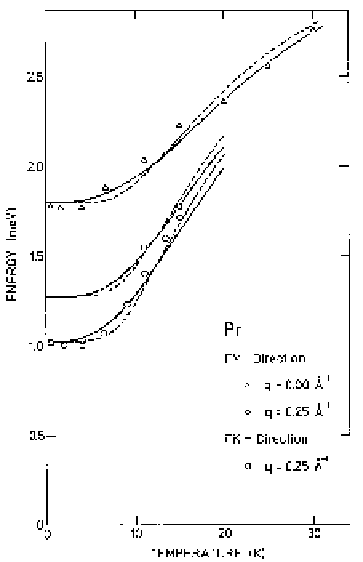Environmental Engineering Reference
In-Depth Information
the equation of motion of this function. This method requires rather ex-
tensive manipulation, but it is essentially straightforward, and we shall
not discuss the details here. It has been applied to the (
J
=1)-model,
corresponding to Pr (Jensen 1982b), and the results may be interpreted
by replacing the crystal-field splitting and the exchange coupling by
renormalized quantities, while the excitations acquire a linewidth pro-
portional to the fluctuations in the single-site population factors. As
may be seen in Fig. 7.3, this
self-consistent RPA
gives a good account of
the temperature dependence of the excitations on the hexagonal sites in
Pr, and fits the results of Houmann
et al
. (1975b) somewhat better than
their MF model. The mode of lowest energy varies very rapidly with
Fig. 7.3.
The temperature dependence of the excitation energies at
three different wave-vectors for the hexagonal sites in Pr. The dashed
lines give the results of a MF calculation, and the full curves are based
on the self-consistent RPA. The lowest-lying mode is the incipient soft
mode, whose
q
and longitudinal polarization correspond to the antiferro-
magnetic structure which may be induced in Pr by various perturbations.

Search WWH ::

Custom Search